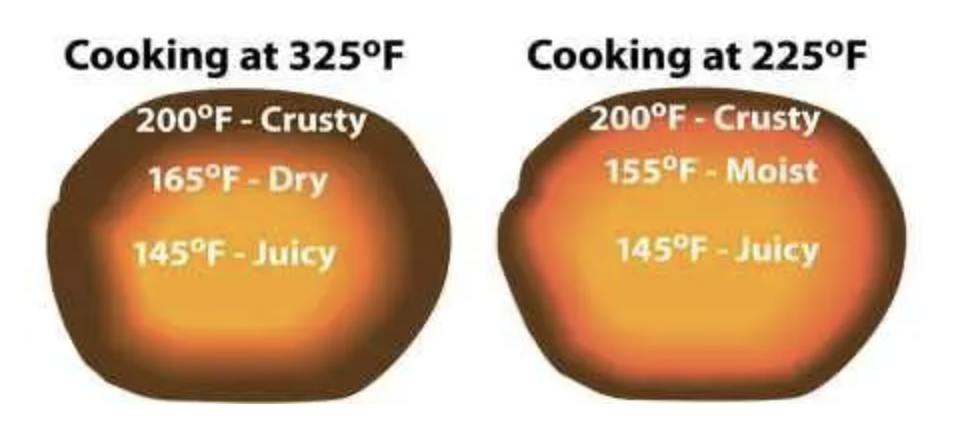Cooking
Mixing tends to only work if the electrical interactions are compatible. Oil is large and electrically neutral, and water is small and highly charged. The two are so different that they would prefer to stick to their own kind in a solution.
- eggs solve this problem due to its protein.
Carbohydrates are an interesting case study. Simple sugars combine with proteins in the Maillard reaction, which is responsible for browning food when it’s cooked. Add a little more heat and caramelisation takes over, while too much heat for too long leads to burnt flavours.
To use tomato paste correctly you need to saute it in the early stages along with onions and garlic, as opposed to just adding it to the sauce
Roast Garlic or Onions first?
It depends on what you want to achieve:
- If you want to flavor the oil and therefore the whole dish evenly you gently heat up the garlic in oil first and take it out once it’s starts to turn yellow. If you would put in the onions first, all its water would make the garlic cook instead of fry. Same with using cream in any dish involving garlic: before usage, heat the cream together with garlic to flavor the fat (you can basically put anything in there beforehand, herbs, parmesan, mushroom powder etc., it’s a game changer).
- If you want to have garlic pieces and thereby recognizable garlicky highlights (especially for rougher pasta sauces which include bigger tomato or eggplant pieces etc.), then put it in after the onions.
Marinade
Parts of a marinade:
- some form of acid to tenderize (1 part)
- soy sauce, lemon juice, orange juice & even Dr.Pepper!
- an oil (3 parts)— which serves as the component of fat
- flavor
https://www.seriouseats.com/basic-marinade-for-stir-fried-meats-recipe
Chicken Marinade
A chicken marinade should have four key components: fat, acid, seasoning, and time. You can play around with these in endless combinations.
- Fat. Fat plays two roles in a marinade. It transfers flavors that are fat-soluble to the meat (meaning you won’t be able to taste other ingredients as well without fat). Fat also helps to keep the meat moist. 99% of the time, I use olive oil. Vegetable oil is another excellent, neutral option.
- Acid. Acid tenderizes the meat by breaking down its fibers. Citrus juices, vinegar, yogurt, and buttermilk are four excellent options. For today’s recipe, I am using lemon juice. Lemon pairs beautifully with chicken and is easy to have on hand.
- Seasoning. Here the possibilities are truly endless! Citrus zest, herbs, aromatics (like onion and garlic), and spices can all come into play. The one non-negotiable is SALT. I use either kosher salt or, for even more complexity, soy sauce and a dash of Worcestershire.
- Time. MARINATING LONGER IS NOT BETTER! The ideal amount of time to marinate chicken is 5 to 6 hours, but even 15 minutes makes a difference. See below for more.
Tips
- just a little oil added to the butter gets whatever you're cooking nice and crispy on the outer edges and prevents the butter from burning.
Mushrooms
Cleaning Mushrooms
- Wipe each mushroom over with a damp paper towel for soft pastry brush if needed to remove loose dirt and debris. Work one at a time.
- Lightly rinse under cold water and thoroughly pat dry with paper towel.
- Avoid soaking mushrooms as they will absorb water like a sponge and won’t brown during cooking.
Meat
Rule of thumb: The thicker the meat, the lower the cooking temperature. The thinner the meat, the higher the heat. When in doubt, cook low and slow.
- Hot and fast works for thin, skinny foods like skirt steaks (shown here), asparagus, and shrimp because skinny foods cook quickly. If you want a good dark brown sear (and you do) you need high heat to make that sear without overcooking the interior.
- It is easier to hit the bullseye of a slow moving target. You stand a better chance of getting the food done to the proper temp without overshooting the mark when you cook low and slow.

the optimum internal temp for most pork and beef is around 130 to 135°F cuts like beef brisket, pork shoulder, and ribs are too tough to eat at ~130°F, due to a lot of connective tissue.
-
if these cuts are brought to 203°F or so, fats melt and the tough stuff softens up.
-
When cooking meat in the oven, keep the piece close to one another so the juiciness isn't lost to evaporation
-
Lean meat (ex. pork chops) will dry out quicker in the oven
Steak
- Put a little bit of olive oil in the pan,
- go to super high heat for one minute on each side,
- kill the heat
- put in garlic butter and spoon it over the steak until 125 degrees (for med-rare)
Children